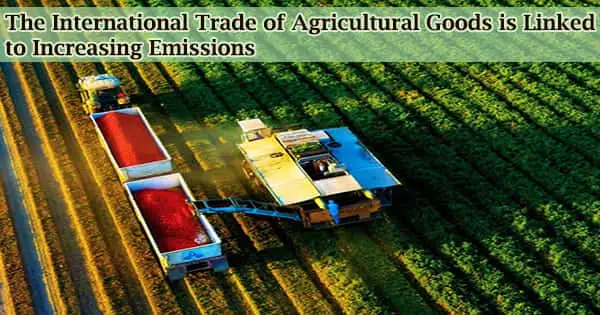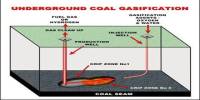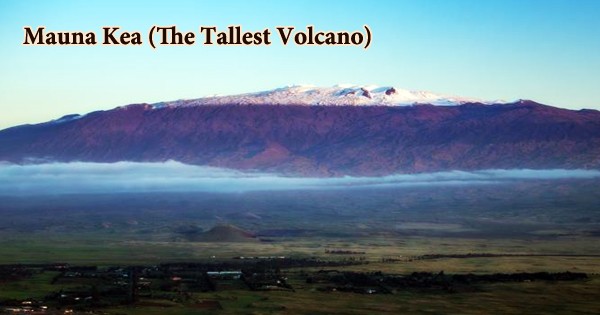Researchers from the University of California, Irvine, and other institutions have established the strongest link yet between the rise in greenhouse gas emissions in less developed countries, primarily in the Southern Hemisphere, and the consumption of agricultural products in Asia, Europe, and North America.
Farmers and those working throughout the food supply chain depend heavily on trade for their livelihoods. Additionally, it increases consumer choice and aids in lowering food insecurity all across the world.
Researchers report that trade in land-use emissions, which result from a combination of land-use change and agriculture, increased from 5.1 gigatons of carbon dioxide equivalent per year in 2004 to 5.8 gigatons in 2017 (when accounting for other greenhouse gas emissions like nitrous oxide and methane).
The researchers discovered that between 2004 and 2017, the global trade in agricultural products was responsible for over three-quarters of the greenhouse gas emissions. This includes destroying carbon-absorbing forests to make room for farms and pastures.
“Roughly a quarter of all human greenhouse gas emissions are from land use,” said co-author Steven Davis, UCI professor of Earth system science. “Our work shows that large shares of these emissions in lower-income countries are related to consumption in more developed countries.”
Higher-cost agricultural nations have resisted opening their agricultural markets to free trade without assistance. The simplest approach to safeguard the agricultural industry was to implement border controls, such as high, variable levies or tariffs, that kept domestic prices at a politically set level above global prices.
Brazil, where it is common practice to clear natural vegetation like forests to make room for farms and pastures for livestock, and Indonesia, where old, carbon-storing peats have been burned or otherwise eliminated to allow the cultivation of plants to produce palm oil for export to wealthy countries, were the top sources of land-use change emissions during the study period.
We hope this study will raise awareness of the role of international trade in driving land-use emissions. In turn, importers can adopt ‘buy clean’ policies to reduce the most emissions-intensive imports and discourage regions from gaining an environmentally destructive trade advantage. We recognize that several regions, including Europe, the U.S., and China, have seen an increase in efforts taken to improve supply chain transparency in recent years a good sign indeed.
Steven Davis
According to the experts, almost 22% of the world’s 1 billion hectares of crop and pastureland are utilized to cultivate goods for consumers abroad. Nearly one-third of the land utilized for trade in products is taken up by commodities including rice, wheat, corn, soybeans, palm oil, and other oil seeds, which also account for around half of the trade’s greenhouse gas emissions.
The analysis revealed changes that occurred between 2004 and 2017 in specific geographic areas: China was a net exporter of agricultural products in the beginning, but by 2017, it had switched to being an importer of both goods and land-use emissions, primarily from Brazil.
Brazil’s exports to Europe and the US, the country’s top trading partners for agricultural products in 2004, decreased at the same time.
Brazil, Argentina, Indonesia, Thailand, Russia, and Australia were the top export-related emission producers in 2017, the latest year the researchers looked at this. China, the U.S., Japan, and Germany were the biggest net importers of goods linked to these emissions, followed by the U.K., Italy, South Korea, and Saudi Arabia.
Human land use practices have significantly disrupted ecosystems, decreased biodiversity, depleted water supplies, and polluted local habitats in addition to increasing the amount of greenhouse gases in the atmosphere.
From a financial perspective, the exporters contributing the most to the gross domestic product through land use emissions are likewise heavily reliant on export agriculture.
Davis said, “We hope this study will raise awareness of the role of international trade in driving land-use emissions. In turn, importers can adopt ‘buy clean’ policies to reduce the most emissions-intensive imports and discourage regions from gaining an environmentally destructive trade advantage. We recognize that several regions, including Europe, the U.S., and China, have seen an increase in efforts taken to improve supply chain transparency in recent years a good sign indeed.”
The project funded by the National Science Foundation and U.S. Department of Agriculture, the ClimateWorks Foundation, and the Gordon and Betty Moore Foundation also included researchers from the University of California, San Diego; the University of California, Davis; Stanford University; China’s Tsinghua University, Beijing Normal University, Peking University, Chinese Academy of Sciences; and Germany’s Ludwig-Maximilian University.
















